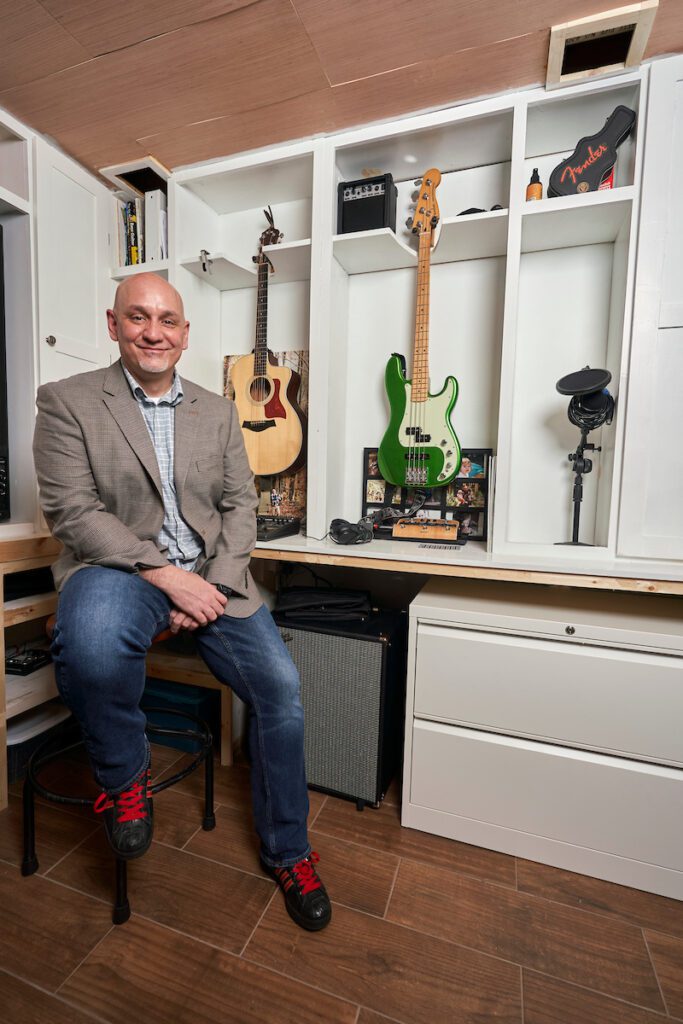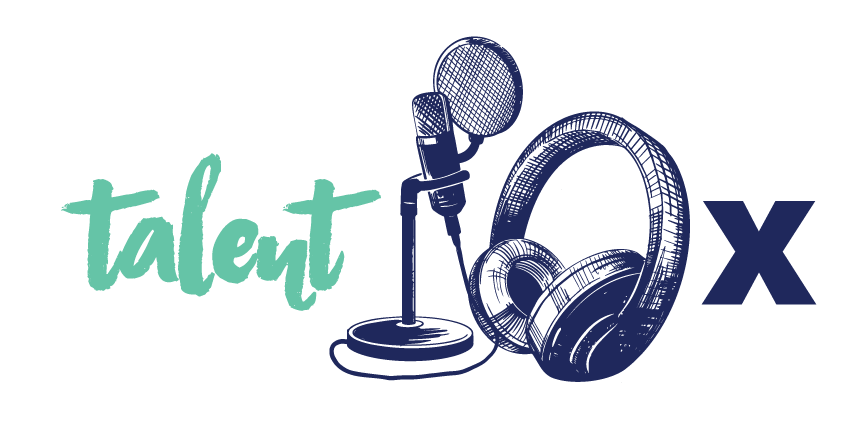The first episode of Talent Management’s new podcast is now live! This bi-monthly podcast will host talent and HR professionals from across the globe sharing their stories, learnings and big ideas and ambitions for the future of talent management. The first episode features a conversation between Talent Management’s managing editor, Ave Rio, and John Gilleeny, senior director of global talent and learning at ZoomInfo.
The following is an excerpt from Talent Management’s new podcast. To hear the full conversation, click here.
Ave Rio: Hello everyone, and welcome to our new Talent Management podcast. I’m Ave Rio, Talent Management’s managing editor, and I’m so happy to be here today kicking off our first episode. The world of work has transformed, and there’s surely more change on the horizon. At the forefront of this transformation is our people. Prioritizing their engagement and connection, helping them feel a sense of belonging and purpose and building strong and safe spaces in our organizations is paramount. We’re so excited to be launching this podcast at this pivotal time. We hope you will join us along this journey and tune in every month to hear from leading talent and HR professionals from across the globe as they share their stories, learnings and big ideas and ambitions for the future of talent management.
If you have questions or have an idea for someone who would make a great guest on our show, I encourage you to shoot us an email at editor@talentmgt.com. Without further ado, I’d like to give a warm welcome to our first guest John Gilleeny, senior director of global talent with ZoomInfo.
AR: Welcome, John. Thank you so much for joining me. I’m so excited to kick things off with you today. You seem like the perfect first guest as we just ran a profile story on you in Talent Management. Before we get into your new role at Zoominfo, let’s talk about your career journey. You say you credit your career now to the encouragement of your high school art teachers who helped you find the best version of yourself. I’d love to hear more about that time in your life and those pivotal teachers.
John Gilleeny: Without going down to a sort of an existential deep dive, maybe a fair thing to say about formative events, like K-to-12 and other formative events in people’s lives, you come in contact with these really important players. People whose energy, passions slingshot you in a direction. We’re all luminous beings, and on some level you absorb energy from the people in the situations around you. Some of those are so formative that they slingshot you so strongly in a direction that it has an enduring impact on your whole life. And here I am, 30 years later, continuing on many levels over and over again. Whether it’s in circumstances or situations like this, or even day-to-day conversations with my team about where these formative events really shaped who you are and have become part of your leadership journey. And 30 years later, it has had a lasting effect on me.

The K-to-12 system generally does a good job helping young kids find out what they’re good at, what they’re passionate about, what they love and then give them that energy to catapult them in a positive direction and I was very fortunate. I had a group of teachers, particularly music and art teachers who saw something in me that at the time that I didn’t see myself and it was a differentiator for me. I became an art teacher. I got my degree in fine arts and a certification to teach art in Pennsylvania school districts. And I did that for quite a bit of time. I taught K-6, I taught 6-8, and then I taught 9-12. I taught at each level and each had a lasting impact on me. I had these formative experiences with my high school teachers, and then I had these formative experiences in my different roles as an art teacher. I had some great principals and great colleagues and, of course, some really amazing students.
It expands your view of the world and where you can help others, where you can bring your passion and energies to help slingshot others and maybe in a positive direction in their life. And I think what I discovered in my own career journey is that K-to-12 is not the only place where you can help others slingshot in a direction. Talent and learning professionals are very formative and important slingshots for other people. And so whether that happens in coaching conversations, or whether it happens in formal learning programs or whether it happens in just the way you talk about people’s careers and help organizations and people find that real partnership.
I’ve discovered over time, the further I get in my career, how important it is to people who are starting their career mid-career, or even end of career, to have folks like us in their camp who are really looking out for that partnership, that dance, you know, I always talk about dancing. And I know probably we’ll talk about that at some point today, but that is really an apt metaphor that you know, we’re building this space for employees and their companies to find this a really amazing partnership.
But back to your original question, I found that there’s not a big difference in the impact you can have with a K-to-12 student is largely the same as the impact you can have with someone in their career development and their own journey. And I think that’s sort of an under-discussed and maybe not undervalued, but maybe under-represented aspect of what we do. That’s critically important. And then that’s such a value add to organizations because we’re the town criers for this beautiful partnership and this relationship and helping people build their careers and building their engagement and giving them opportunities to grow and thrive.
So who were the high school teachers, who were the luminous beings that I absorbed their energy and slingshot in another direction? They are all over the place and my passion becomes: How do I become that? How do I help others slingshot? And so high school was just the proverbial start of that idea. And it has really expanded for me in so many ways and it has become such a focus for how I like to operate and how I hope as we’re running programs and teaching others and helping others see leadership through the right lens. We’re helping them see the reality – that’s what it’s all about. We’re slingshotting others forward. We’re accelerating them in a way that changes their lives. It makes them better and it makes the company better too.
AR: How does your role now at Zoominfo differ from your past corporate positions at SGH and SharkNinja? What exciting things are you currently working on?
JG: Well, what I would say that I certainly wouldn’t do is to look back on those roles and say, this wasn’t working, or this wasn’t good. Each company has its own version of developing their talent and each one has its merits. Every company runs differently and the way I’ve always viewed it is you come in as a talent professional and you have to pivot to match the company culture and bring your best self to that culture. And each one certainly has been different, each one has its own needs, different industries. Their version of how they want to develop their talent, what talent development looks like, what their needs are is very different. And so what I’ve loved about each of those opportunities is as a talent pro you get a different flavor. It’s like being a chef at three different types of restaurants. You’re a chef at Asian fusion or you’re a chef at a traditional American or you’re a chef at Mexican. You still have to sort of have the basics of what it takes to be a really talented chef and that creativity and commitment and rigor that comes with it, and not just the knowledge of your craft, but the flavor of the way the presentation and the expectations and the need is all different but equally as gratifying.
I’ve led some incredible teams across all three companies. I have maintained really strong relationships with each of those teams in each of the leaders. And again, not to keep sort of harping on this idea of like you take energy from, and you give energy to others and it helps move in a direction. Those were all formative for me, my former teams, my former bosses, those former organizations. You absorb all that energy, you absorb that knowledge and you absorb those experiences. And every time you take a leap to the next experience, you have a bigger and stronger wheelhouse to bring ideas and exposure to different things in the industry, you bring that knowledge to bear.
Each time you take a step, you take all that energy and those ideas with you and the next step you take is a very different experience for you because you carry all that with you. And so I’m grateful now that I’ve landed at ZoomInfo at this time because I’ve been exposed to a lot of things in these different roles. And now I have the great privilege of carrying all of that with me and carrying those experiences with my team and those organizations and this industry with me which lends me here today. It’s a great opportunity. We’re making the most of this opportunity and it all sort of fits together, it’s part of that catapult that just keeps pushing you forward.
AR: Another thing you’ve carried with you through all those positions is this dance metaphor that you mentioned earlier, that you like to think of successful work environments and relationships like any great dance pairing: two well-defined roles of the leader and the follower. Tell me more about how this fits into your talent strategy.
JG: It’s a philosophy, I think. It’s an undergirding philosophy for me in that people in this craft, as you well know, come up with a lot of metaphors to try to explain how we should be thinking as talent professionals. This metaphor is really powerful because talent management pros are in a very unique position in an organization because they’re both an organizational advocate and an employee advocate. It’s such a beautiful marriage when it works really well and the culture is really strong and the dance metaphor really fits that.
If you think of a leader as the person who leads the dance and you think about an individual contributor or an employee as the follower in that partnership, when it works really well, it isn’t just about the leader giving commands and the follower following them, it’s a give and take. If it’s going really well and it’s a really beautiful dance, you can see this give and take happen. For organizations that have figured this out, the leader is giving the directives and providing guidance and giving cues so the follower do their part, but they’re also following and they’re responding and they’re paying attention. And If you really watch professional dancers dance, there’s clearly one person who is leading, they are in sync and there’s this constant exchange that happens. And I think the really great leaders and the really great organizations are aware of this and they see themselves as not only a leader, but also a follower. They listen, they pay attention, they’re in tune, they react. And when that happens, if you put a bunch of leaders and a bunch of followers on the dance floor, it creates a really beautiful synergy. And I like that the metaphor sort of expands itself in that when there’s a lot of leaders and a lot of followers on the dance floor and they’re all looking to each other and not dancing in silos, what you get is a really beautiful center. And you get a lot of people doing a lot of creative work and there’s a bigger and more beautiful output. Everyone is in sync. If you put that metaphor through an engagement lens, when it’s working like that people are more apt to stay on the dance floor and that to me is a retention metaphor. When that metaphorical dance is happening, the way it should, you end up with a really wonderful organizational culture.
And I would take that metaphor one step further for the leadership concept: there’s dance leaders and then there’s choreographers. And for the organizations that do this really well the dance leaders can come down to the dance floors and coach and help and make sure that folks are doing the dance moves the way they should, but then they go up on the balcony and they can take a bigger view and fix and sort of see how the whole is fitting together. They come back down to the dance floor and they redirect and get in the weeds and help that function the way it should. And then they go back up to the balcony and they look from there.
For me, the dance metaphor has so many layers and it corresponds to leadership in a traditional sense. It corresponds to leadership from an engagement and retention sense and it corresponds to leadership from a strategic versus tactical sense. When great leaders and great organizational cultures are doing this really well, they’re getting folks to dance in sync and then they’re giving them space to get up on the balcony to make sure that that choreography is going the way it should. And that’s a relentless process. The organizational cultures that get it right, realize it’s a, it’s an unending movement between the dance floor and the balcony and helping that exchange happen in a very healthy way. And then, you could even take this to a burnout, mental health standpoint as with any sort of rigorous process that requires a lot of energy and effort and a lot of focus, people can get tired, they can get hurt And if leaders are paying attention, they can sense the organization is feeling worn out and they take steps to make sure that they can get themselves back on track. And that layer of this whole thing I would say is equally important. And it all comes back down to this idea that leaders are leading and following. They’re paying attention, they’re responding and it’s an unending partnership.
To hear the full conversation, including John’s thoughts about his business-savvy approach, emerging trends in the industry and more, listen to the full episode. To learn more about John, check out his recent profile.
This transcription has been edited and cut for clarity by Talent Management Associate Editor Calvin Coffee.












